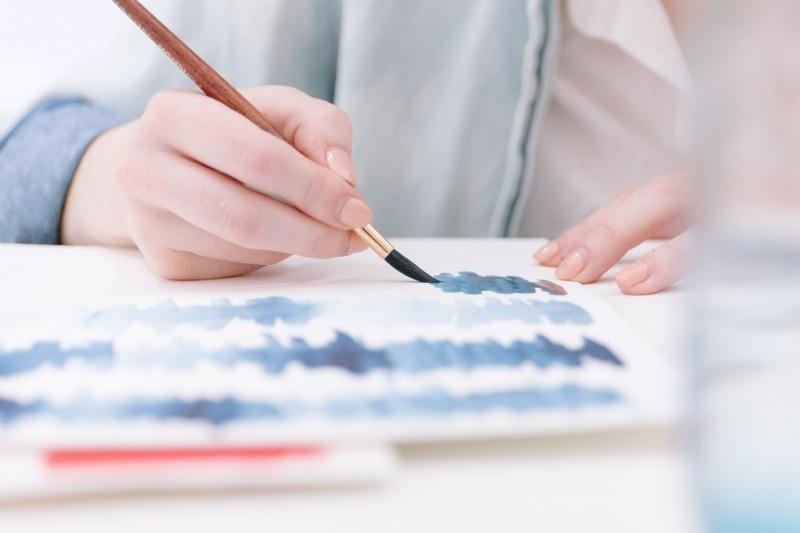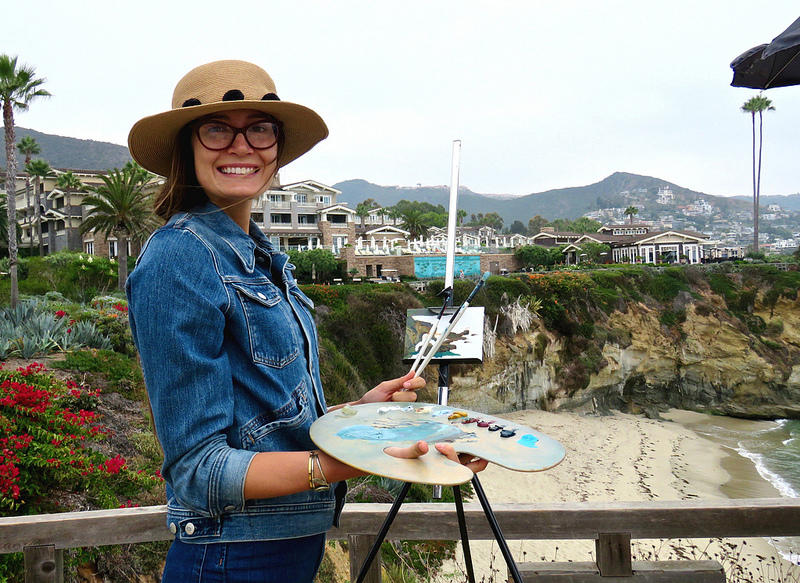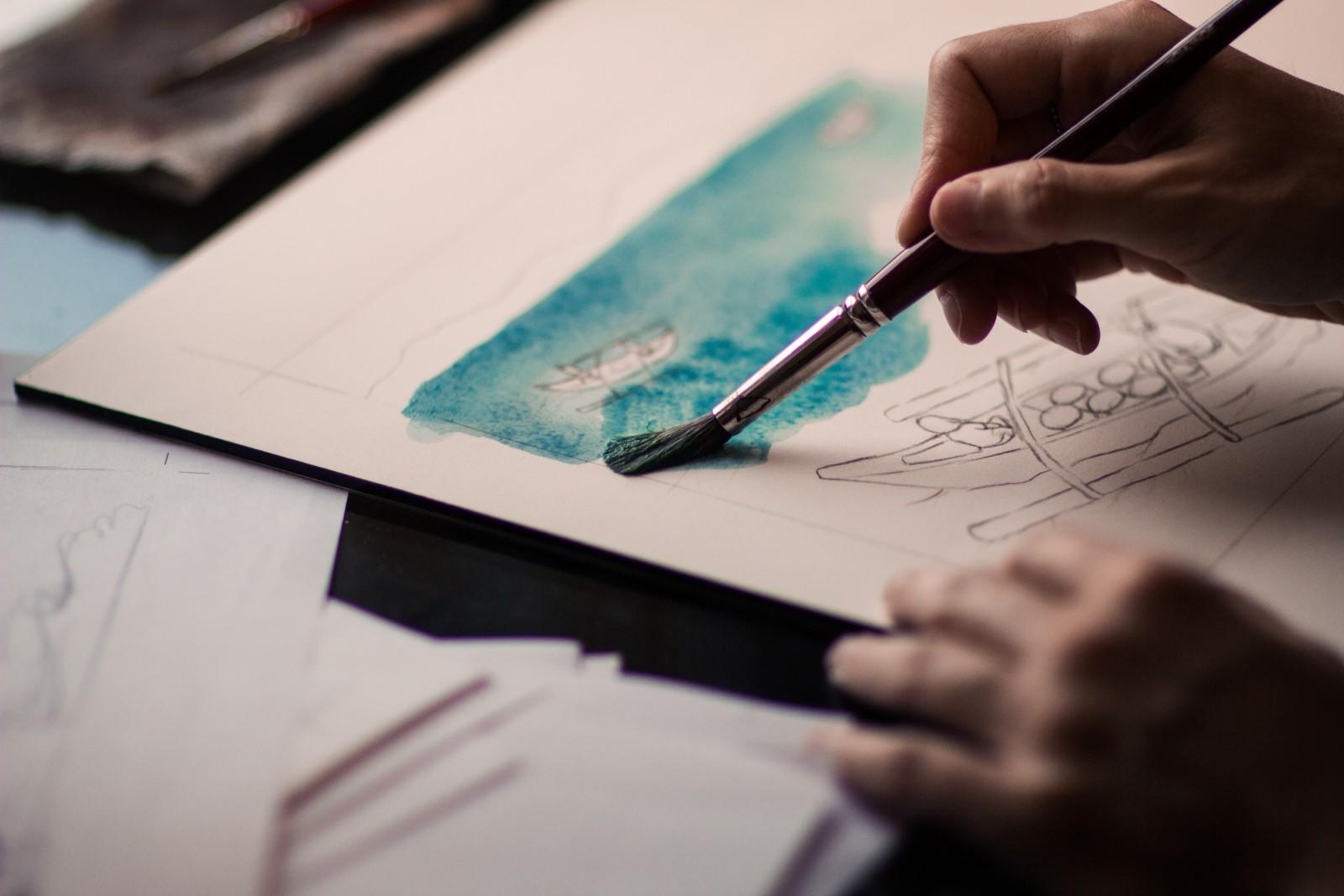Chapters
- 01. What is Art?
- 02. Offering a Fair Price for a Drawing Course Depending on the Level of the Student
- 03. Choose your Rates for your Drawing Course according to your Degrees
- 04. Offering an All Inclusive Rate for a Drawing Course Including the Material
- 05. What are the Packages of Drawing or Painting Courses?
- 06. How to Bundle Art Classes into Packages
Finding the best price to offer private drawing lessons is not an exact science.
For one, even though many seek out tutoring companies to lend help with homework or provide supplemental instruction, doing so is still considered private tutoring - even though those one on one sessions may occur in a fairly crowded office or even in a group.
Clients who engage the services of a tutoring center understandably pay higher fees to cover, among other things, study materials and office overhead. That means that, while hopeful parents may pay up to £50 per session for a math tutor or an English tutor, the one actually giving help with grammar or maths might only receive £20.
It is thus understandable that you, like so many others, would prefer to be an independent tutor. We should bear in mind that most tutoring centers tutor in academic subjects, homework help and test prep.
But you are not an algebra tutor, a reading tutor, a chemistry tutor or even a French tutor, nor do you help any students sharpen their study skills.
And, while nobody is saying you are not qualified to conduct one on one tutoring in math and science, the discipline you are really passionate about is art - you are someone who strives to make our world a more beautiful place and teaches others how to do so as well.
That adds a new dimension to your establishment in the tutoring business, the main one being that your discipline is more specialized, with a smaller potential for students academically motivated to succeed in mastering the knowledge necessary to write a college essay that will earn them high marks.
Many enthusiastic art patrons seek art classes as an enrichment activity rather than to succeed in gaining entrance to the art school of their dreams.
That is why it's necessary to take into account several parameters so you get paid fairly while your students get a learning environment tailored to their artistic aspirations.
- Where will the painting or drawing workshops take place - will you travel to their homes, invite them to your studio or embrace modern teaching strategies and become an online tutor?
- Would you have to take your students' learning style into consideration, as a reading and writing tutor or one who teaches calculus might?
- Is the artistic material supplied (paper, paint, brushes, felt, etc.) for the drawing course?
- And would those materials work for kindergarten students as well as those enroled in universities?
- In what purpose are these courses or internships of plastic arts given?
So many questions to ask as you become a tutor!
One of the most difficult is how to set a price for private lessons of a fairly remunerative and attractive drawing course for the professional or the enthusiast who delivers it.
Another pertinent one being...

What is Art?

Although there is no universal definition of art - more specifically, there are several definitions, the consensus is that art is a created work that lends beauty and meaning to the human experience and is produced through the imagination, talent and skill of the artist.
Traditional examples of art include drawing and painting, printmaking, sculpture, dance, literature, and music.
Today, these parameters have been stretched to include photography, quilting, pottery, jewellery making, film making, fashion... and, as the definition of art has expanded, so has the media to produce such art - even moving into the digital realm.
Graphic art is virtually everywhere you cast your eye; CGI - computer-generated imagery now dominates Hollywood film production, and who doesn't love Mickey Mouse and Snoopy?
Clearly, becoming a tutor of art has wide-ranging possibilities!
Yet, through all of the art - traditional, modern and done in these varieties of media, most people persist in thinking of art solely as painting and drawing.
What type of art do you practice? What is your medium? Do you think tutoring future graphics artists should cost more because of the level of technical skill involved, or should teaching painting yield more per hour because it is more sought after?
It is these types of questions that are at the heart of the discussion about setting rates for art tuition.
Before we can guide you in setting fair rates for your art classes, we have to know what the art in question is.
- Are you teaching art as therapy, maybe to youths or the elderly? In this instance, technique would be less important than expression.
- Or, perhaps you've elected to take on the growing population of adults who seek art classes in order to achieve a more satisfying work life balance.
- Here you would need to expound a bit on technique, as well as critique and possibly correct your students' work.
- Might you look exclusively to tutor art students already enroled in a degree programme at university?
- With this calibre of student, you would have to be at your technical best, reinforcing theory as well as demonstrating the strokes and colour blending that will yield flawless works.
Whatever your medium, whomever your students and no matter whether you make use of today's modern drawing tools - a Wacom tablet and your favourite software, we now discuss how to set your prices for tutoring in art.
Offering a Fair Price for a Drawing Course Depending on the Level of the Student
Depending if the art teacher leads a private lesson for a child in leisure or for a preparation for an entrance examination in a school of art, the rate will be different. Quite logically, the price of a painting workshop or drawing can vary from the simple to the double, let's say from £20 to £40 per hour.
Indeed, the required technical level will not be the same, just like the personal involvement of the teacher, which can become a professor as well as a personal coach. But we can also wish to learn to draw for our own pleasure as can be seen here.
The approach to always keep in mind is that of the win-win. It's a fact that the drawing or painting teacher loves art, but he offers classes to earn money.
Namely that if the professor is self-employed to declare their hours of private drawing courses, they will have to put back a contribution of about 25%.
For example, he can propose painting classes in their own residence for £20 an hour, asking the student to bring his material. Once the contributions are paid to the National Insurance Contributions Office, he will keep only approximately £15.
In addition, if he supplies all the material from the paper to the eraser, you can quickly imagine that giving drawing courses is not very lucrative…
Of course, if a student asks for an intensive preparation, hoping to enter Newcastle University or the University of Oxford, for example, he will have to dig into his pockets.
Now let us imagine you will host landscape watercolour painting courses for adult beginners, or host a street photography session.
Here, you will have to consider whether you would take your student(s) into the field to actually view the landscape or street in question, along with whether you will provide the watercolours and the canvas - if that is your choice.
You might even furnish the digital cameras...
For these lessons, you would have to consider the cost of everything, from travelling to the price of the canvas - unless you request that your student furnish materials (or camera) him/herself.
And you will have to find students for your classes, too...
You would also have to figure that going into the field would take a significant block of time, meaning that there would not be any other sessions on your schedule while you are away.
By contrast, a still life or portrait photography can be executed in a studio, so naturally you would not need to incorporate travel costs into your fee. Furthermore, you could limit class time to an hour or an hour and a half, meaning you may plan for more sessions on that day.
What about a life drawing?
If your art tutoring services include drawing and painting a live model, you would have to factor the hourly cost of the model into your class rates.
In such cases, the best tutors generally advertise the extra cost when they announce the class.
You'll note that, in a lot of these instances, group sessions would be more feasible - imagine taking a lone art student into the field for a photography or landscape painting session!
That is because, in most cases, teaching art in classes is more practical than individual instruction. As such, setting rates for a small group is easier done than for a lone art student who requests home tutoring or online tutoring on a weekly basis.
Anyone looking for a private tutor to learn art would most likely have something at stake: good marks in their art classes perhaps, or knowing art history in order to pass a college entrance exam.
If such individualized tutoring sessions are geared more toward a type of academic tutoring, you may set your rates competitively with other tutoring programs that help students achieve academic success!
Find out what qualifications you need to become a private art instructor...


Choose your Rates for your Drawing Course according to your Degrees
As an independent art teacher, it's necessary, as in any domain, to value your experience and your degrees as a drawing teacher.
Therefore, an independent artist who has already exposed his work, can ask more for a drawing course than a post-bachelor student who has been drawing for a long time.
Also, if you have only taken the high school diploma with option plastic arts, you can't ask for the same remuneration as for a student of the Fine Arts or of the Royal College of Art. Logic. In fact, many teachers find tutoring as ideal jobs for ex teachers.
The expertise has a cost and it's necessary to value your background. Indeed, during your private lessons you can pass on the techniques you were taught in prestigious formations to people who would never have access otherwise.
Concerning rates, here are some initial ideas:
- A high school graduate can start offering a course for £15 per hour
- A student with an Applied Arts BA can ask at least for £20 per hour
- A graduate of a school of art can give courses for £35 per hour
Regarding the student, he should not hesitate to look closely at the CV of the professor and to ask if it's possible to see some achievements or certifications.
And yes, we don't judge a professor of plastic arts "on paper". It's necessary to see what he actually masters.
Join the discussion: is professional status mandatory to become an art instructor?
And if you really want to learn to make attractive watercolours and the professor is an expert in acrylic paint, that's not necessarily the right person.
This is why it's always better to test a first drawing course before making a commitment on the duration for a fixed package of 5 or 10 courses for example. This is good for the teacher as for the student!
SuperProf allows art teachers and amateur painting and plastic arts students to simply enter into a relationship. The best of the site: art professors profiles are ultra complete to make a good choice.
If the professor goes to the student's home, they can charge, of course, a compensation for the kilometres expenses. For example, if the course is 15 kilometres away from the place of residence of the teacher, he can ask for a stake at the level of £3 per course.
Learn the best ways to find students for your art courses!

Offering an All Inclusive Rate for a Drawing Course Including the Material
The art or painting teacher can choose a particular formula, which is to supply the material or part of the material for his painting course or internship.
Let's make a point on the price of the supplies for drawing and painting:
- A kit of soft pastels costs from £25 to £70 according to the quality and the brand
- A tube of acrylic paint costs from £2 to £4.5 approximately
- A case of painting brushes costs from £4 to £40 according to the quality of the wood, the bristle (synthetic materials or not), the finish, etc.
- 12 paper sheets Canson of 24 x 32 cm cost approximately £4.5 when10 sheets of the format big eagle of 75 x 110 cm amounts to £2.5
- For information purposes, a portfolio in the size of 80 x 120 cm amounts around £70 (essential for the aspiring artists).
For the students who are sure to continue or who participate regularly in art workshops, it can be interesting to have their own material!
Every sub-discipline in an online drawing and painting course can require a specific material. For example, for a workshop of watercolour, it's necessary to have a specific paint and adapted brushes.
In any case, the minimum is to have a portfolio, a case with dry and soft lead pencils, a kneaded eraser and some sheets at least to begin. This is the basis to learn the techniques of drawing and painting.
It's common that a painter or illustrator has all the drawers filled with supplies or with sheets but providing everything is not suitable. Depending on the means of the art tutor, he can have more or less the material available there, this often depends on the professor drawing or painting status (student, professional, passionate, etc.).
You don't lend your alcohol-based felt-tips Promaker of £25 the 12 units to anyone, in particular to the apprentice artists from 6 to 10 years old. Unless you offer a high-end course!
It's up to the student to find the formula that corresponds to him, according to if he wishes to discover several techniques or to specialize in watercolour, oil paint, oil pastel, artistic collage, etc.
To discover the basic drawing techniques, view the tutorial of the School of Fine Arts on this page.

What are the Packages of Drawing or Painting Courses?
A teacher who wishes to develop loyalty with his students can choose to propose thematic drawing or painting courses, or on demand in a group version.
Rather than delivering courses in dribs and drabs, without knowing where it goes, an art tutor can be better organized. With this system, he manages more easily his employment and his money income.
Another brilliant idea to justify the price of your drawing course, is to create a loyalty card. It allows you to differentiate yourself from your competitors, to give presents to the students who are loyal, and to create a sympathetic capital.
Here are some ideas of rewards that you could offer to your diligent students:
- For 10 courses completed, the 11th at half-price, or the material given for the session, or a free course.
- For 20 courses bought, the 21th offered in a museum to copy a statue.
- With 20 courses bought, the following five with 20% discount.
- An workshop made, the second at half-price.
To gain acceptance of your prices for the drawing courses, there's nothing like good commercial techniques which will tempt your students to continue with you.
Of course, think of smoothing the cost of the course offered in your basic formula so you don't have to pay of your own pocket.
Moral: take out the calculator and run your thinking caps, even if you are a creative person.

How to Bundle Art Classes into Packages
As you've seen, bundling your lessons is clearly more lucrative for you, all while providing savings for your students. However, it only makes sense that bundling is not a one size fits all proposition.
For one, teaching children to draw trees and puppies with coloured pencils is less technically intense than talking a university student through the technical aspects of drawing a realistic human face or hand.
And for those who want to paint or draw or otherwise create art for stress relief, their pursuit is less urgent than the A-Levels candidate who must write a paper on art history.
Rule#1 for bundling: consider the motivation of your tutee.
Our A-Levels student should only need you for a few weeks or months - just until exam day, after which s/he will move on to university and exposure to a higher level of art education.
Still, if s/he should need further tutoring down the road, you want to be at the forefront of his/her mind, right?
That is why providing a series of well thought out, targeted lessons, even at a lower price per session, will benefit you as much as your student.
For such students, you may consider tutoring online; help build up their confidence by going over every part of their course curriculum so they will be completely familiar with ir.
You might start with a free art session, permitting your student to draw anything s/he wants, while discussing technique. The next lesson - next week if you have time; in a few days if time is more pressing, you might talk about the impact of the Great Masters or aesthetics.
The key to bundling such courses is to structure each lesson in keeping with the exam's structure.
What if you're not tutoring test preparation? What if you teach art to a bunch of primary school students?
This is a type of learner who primarily enjoys having fun, so keeping thing fresh and moving along at a relaxed pace would work best.
Rule #2 for bundling: keep a lively pace and mix things up!
This applies to art classes for children as well as for those who seek to learn art for pleasure. Few people want to rehash what they've already been exposed to, so designing a programme where every session brings something new will make your lessons exciting and fun; causing your students to return eagerly and ask when the next course starts!
On the other hand, for those who really want to get a good, fundamental education in art, no matter what the medium, you should make your courses progressive, so that each successive lesson starts with a brief recap of the last session before building on that knowledge.
You would naturally charge more for such course bundles than you would for those who are learning art as a hobby.
Another good course bundle would be targeted to care centres for the elderly, or perhaps you could organise a series of lessons at your local community centre.
Rule #3 for bundling: target niche groups
Here, the emphasis is less on the technical aspects of art so much as they would be on socialising and outreach. You may provide the art supplies - be they yarn or other craft materials or watercolours, and you would arrange your lessons according to the facility's schedule.
The greatest benefit to you would be that such arrangements could be open-ended, meaning they would be a steady gig for you. Furthermore, as you would be working through a facility, you may charge a flat per-hour rate rather than hoping for a high turnout and collecting fees from individual participants.
One important aspect to remember in bundling courses is the flow, from one lesson to the next. For example, if you are studying watercolour landscape painting one week, your next lesson should not jump into portraits in oils.
Rule #4 for bundling: maintain consistency
Although there is a certain freedom of expression in producing art, there should be a measure of stability, especially if your students are virtual novices to the discipline.
Taking them too quickly through a subject matter they sincerely would like to absorb in depth could result in them giving you negative ratings - something you would want to avoid at all costs!

In Summary:
Setting your prices for art tuition is a lot like setting prices for math tutoring, English tutoring, college tutoring or online tutoring.
- Consider the age of your students and balance it against the level of expertise needed to teach them.
- Consider your level of experience with the material in question: being degreed permits you slightly higher rates than, say, an undergraduate who tutors during summer break.
- Consider the rates set by other art tutors in your area.
No one will argue with the fact that the ability to create art, and the ability to teach others how to create art is deserving of fair compensation. The point to consider here is that your ability to teach art is only valuable to those who want to learn it!
So, as you ponder what you should charge for your art classes, you should be careful to not price yourself out of the tutoring market by setting your rates either too high or too low, that last for fear that prospective students will think your lessons would have no value if they're that cheap.
Thanks to this article, now you know how to set your price as an art teacher to propose private lessons of drawing or painting.
In learning how to become a drawing teacher, it's necessary to take into account your level of knowledge, experience, certifications, the offering of the material or not, but also the request of the student-customer and his objectives.
If they just come to learn to draw, it will demand you less effort than for a preparation for an entrance examination for a school of applied arts.
To find tricks that will allow you to excel in your drawing lessons, keep reading our blog! Find tutoring jobs London to Glasgow at Superprof.












Great article